Crashlanding Rosetta deel 3
Alles gaat nog volgens plan
Final commands to be sent to @ESA_Rosetta to make sure we get every last drop of #science #CometLandingSylvain Lodiot @ESA_Rosetta Operations Manager confirms #CometLanding going as planned pic.twitter.com/NUM5Gyc9W8
— ESA Operations (@esaoperations) 30 september 2016

https://twitter.com/esaoperations/status/781768763901349888/photo/1?ref_src=twsrc%5Etfw
5.8 km and counting (down)! Soaking up the sights on this incredible #CometLanding adventure: http://ow.ly/uYhj304IkPH
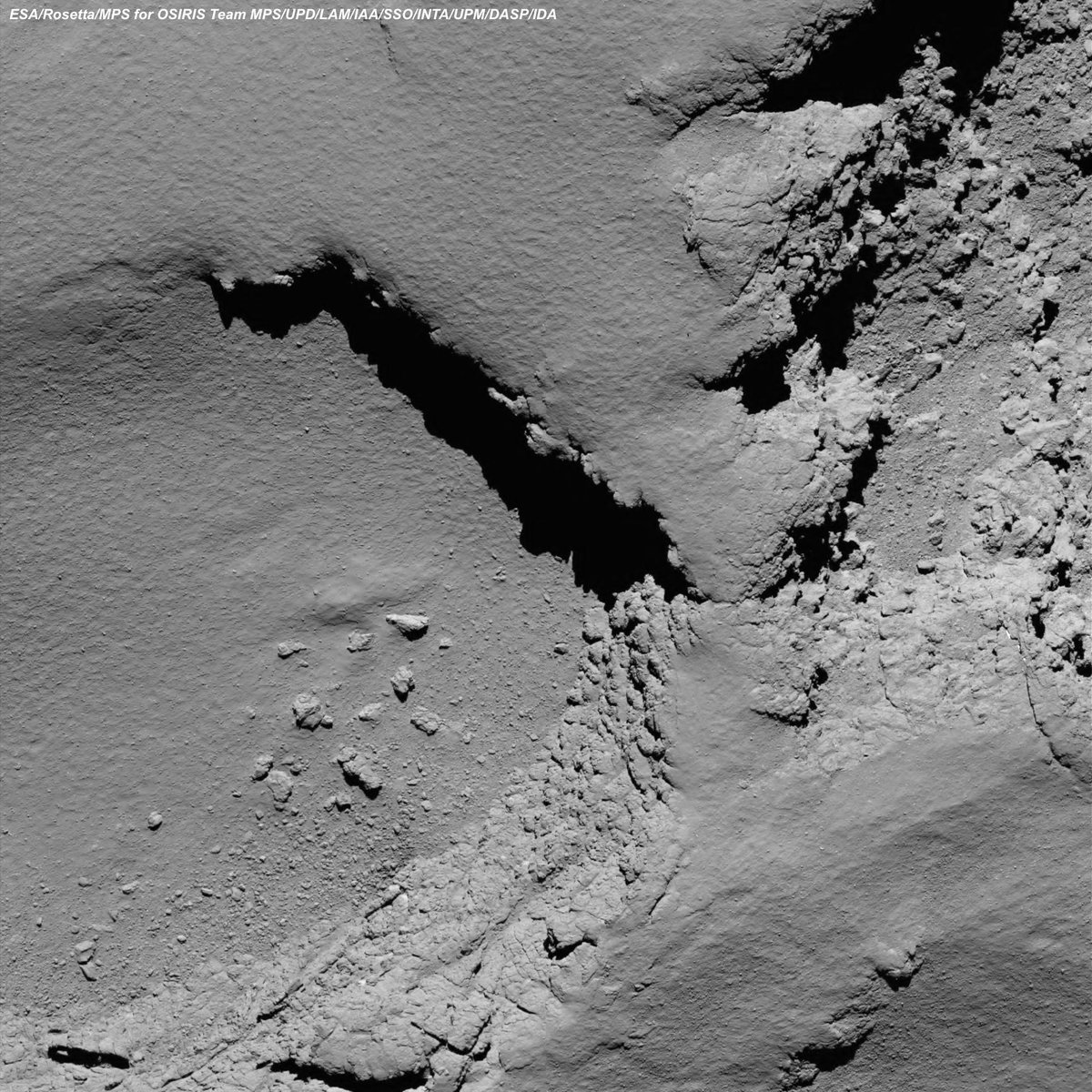
https://twitter.com/esaoperations

Het wordt langzaam aan steeds drukker in de controlekamer...
Throughout the @ESA_Rosetta mission, the #ESOC Flight Dynamics team have been some of the hardest working folks - today, too! #CometLanding
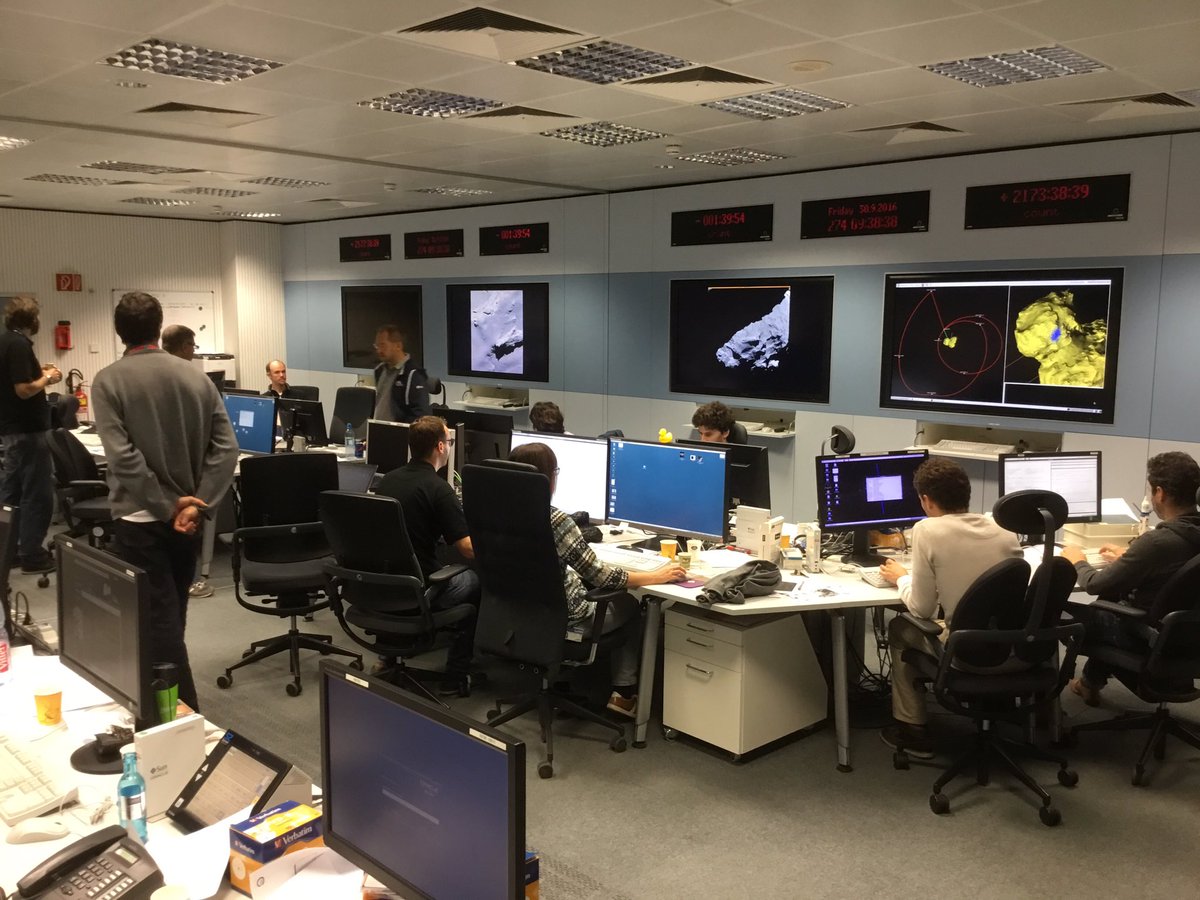
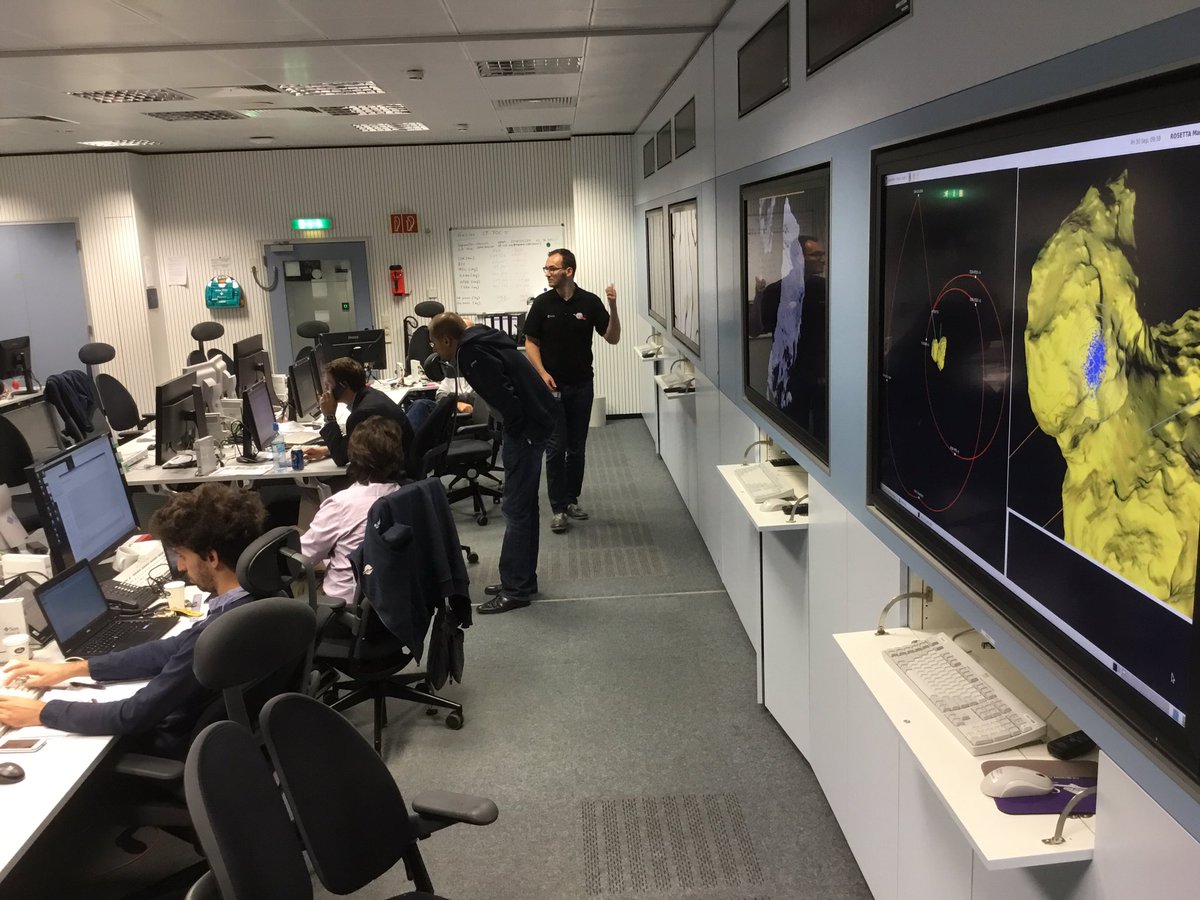
And Flight Dynamics also have some of the coolest visualization tools! #CometLanding #ESOC #67p
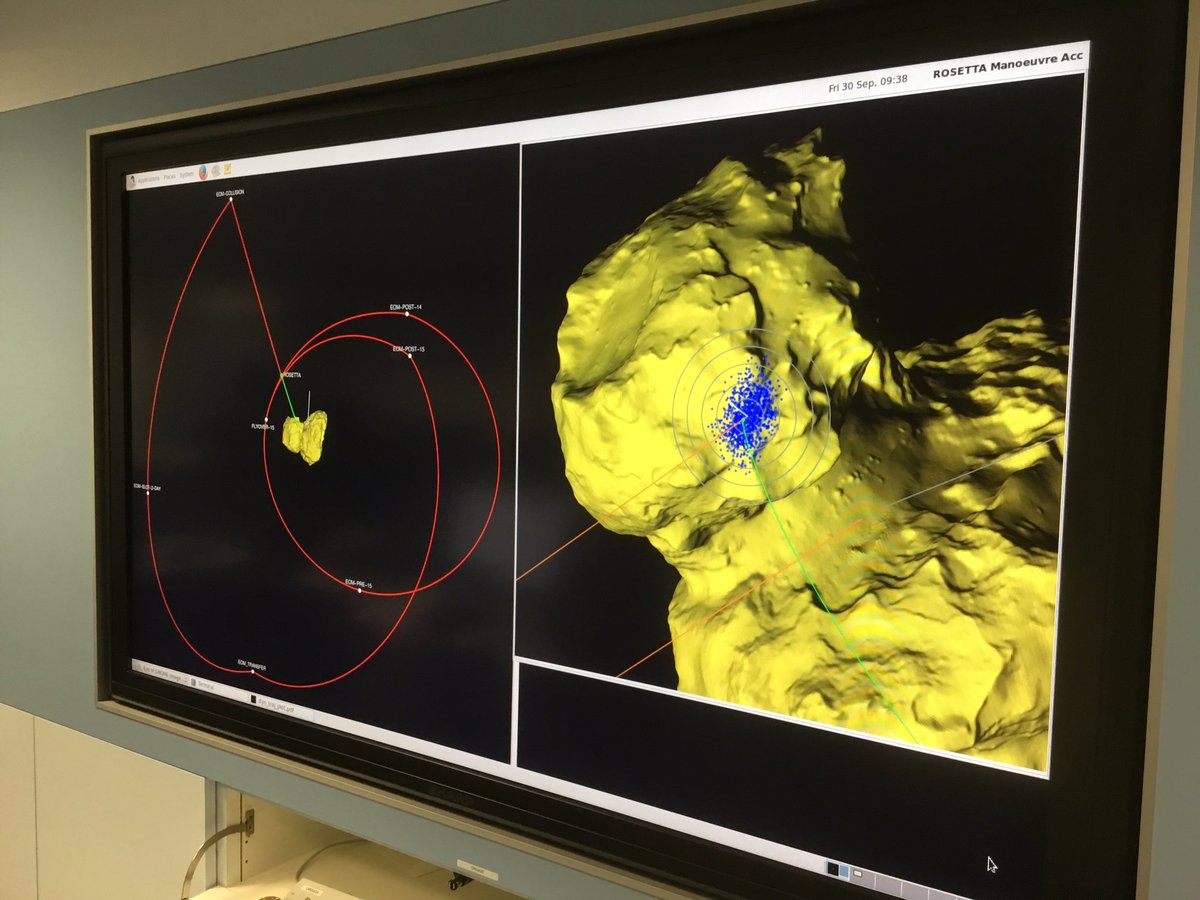 https://twitter.com/esaoperations
https://twitter.com/esaoperations Confirmation of @ESA_Rosetta scanning around #67P to catch a glimpse of the Ma’at pits on #67P #CometLanding with @Rosetta_OSIRIS

https://twitter.com/esaoperations
De spanning stijgt.....
ESA Operations @esaoperations 3 min.3 minuten geleden@ESA_Rosetta @Rosetta_OSIRIS you can clearly see the "steps" in spacecraft attitude (pointing) as it sweeps across the comet #CometLanding

https://twitter.com/esa_rosetta
#Flightdirector #PaoloFerri sends last TC to his @ESA_Rosetta
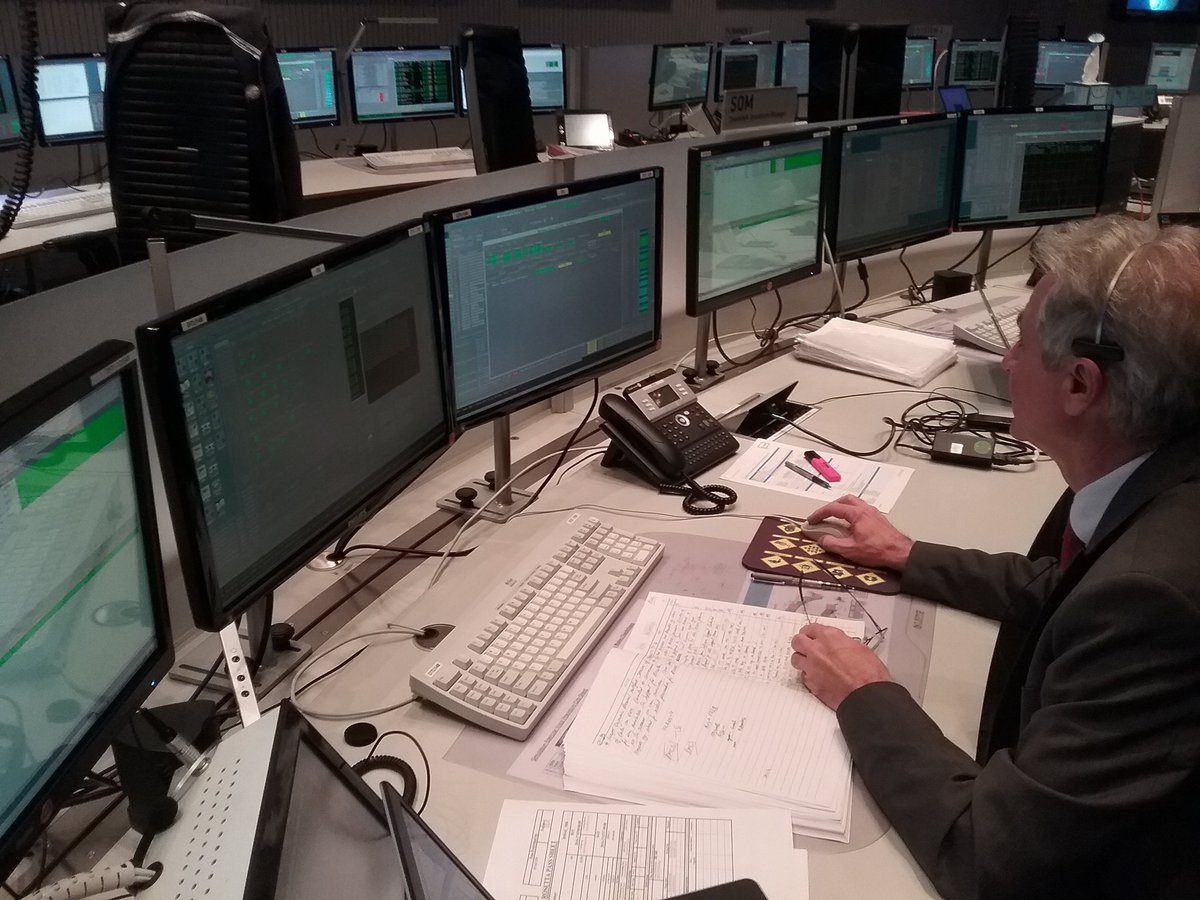
https://twitter.com/hashtag/Flightdirector?src=hash
| Gewijzigd: 30 september 2016, 17:29 uur, door Joyce.s
Crashlanding Rosetta deel 4
Rosina confirms pressure increase
As Rosetta approaches the surface of Comet 67P/Churyumov-Gerasimenko, the Comet Pressure Sensor (COPS) on the ROSINA instrument is measuring the gas pressure around the nucleus increasing!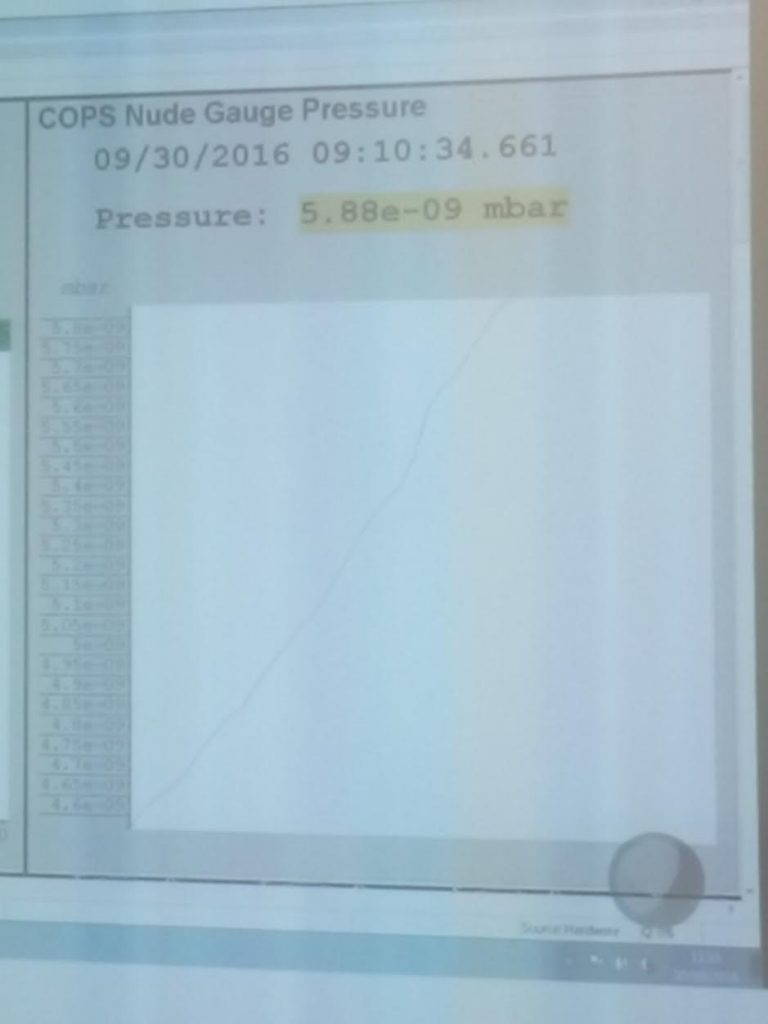
http://blogs.esa.int/rosetta/2016/09/30/rosina-confirms-pressure-increase/
2,2 km boven het oppervlak

Men wordt verzocht plaats te nemen, ze gaan beginnen....
Afstand tot de komeet nog 1 km
Matthias Eiblmaier @ESA_Rosetta Operations Engineer confirms "Distance 1 km from surface" #CometLanding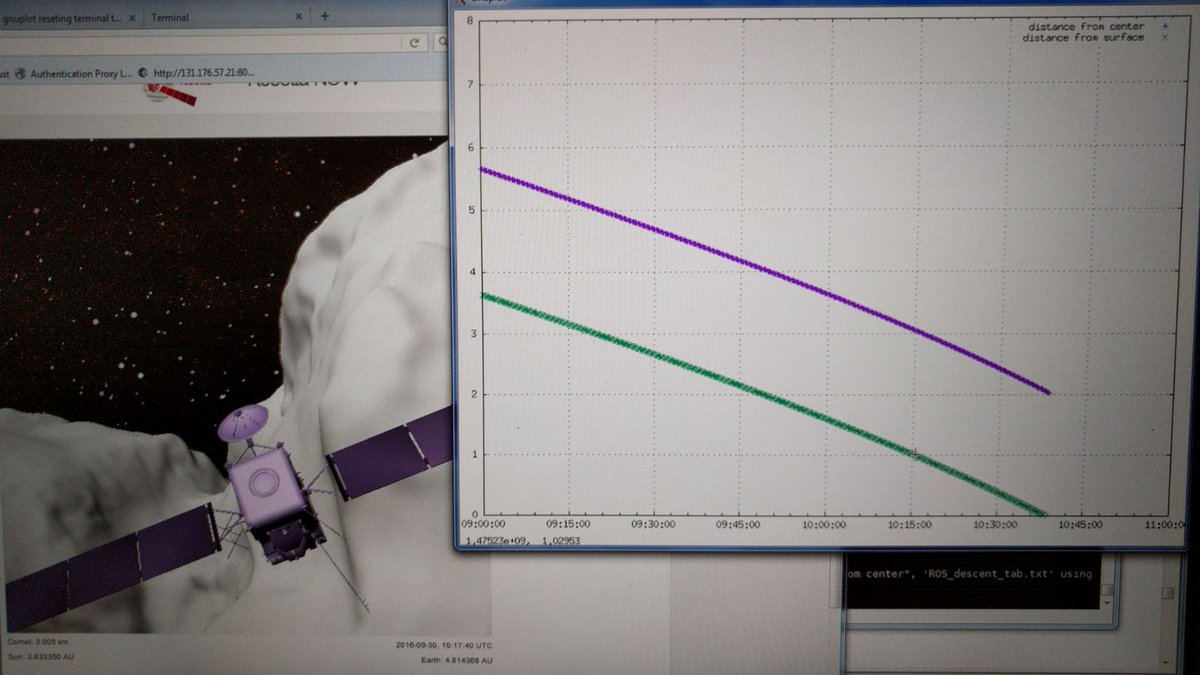
https://twitter.com/esaoperations

ESA Rosetta Mission @ESA_Rosetta 3 min3 minuten geleden
Within a few km the surface, I can really study how the material from #67P turns into dust and gas in the coma! #CometLanding
Het duurt 40 minuten tot het signaal van Rosetta de aarde bereikt!
#ESOC Flight Dynamics revise #CometLanding time to 10:39:10 UTC, confirmation at 11:19:08 UTC (13:19:08 CEST). >400m to #67P @ESA_Rosetta
Het is de bedoeling dat Rosetta landt bij de blauwe stip..
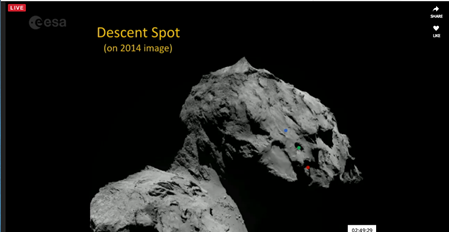
Science still streaming down from @ESA_Rosetta to #ESOC as we await confirmation of #CometLanding
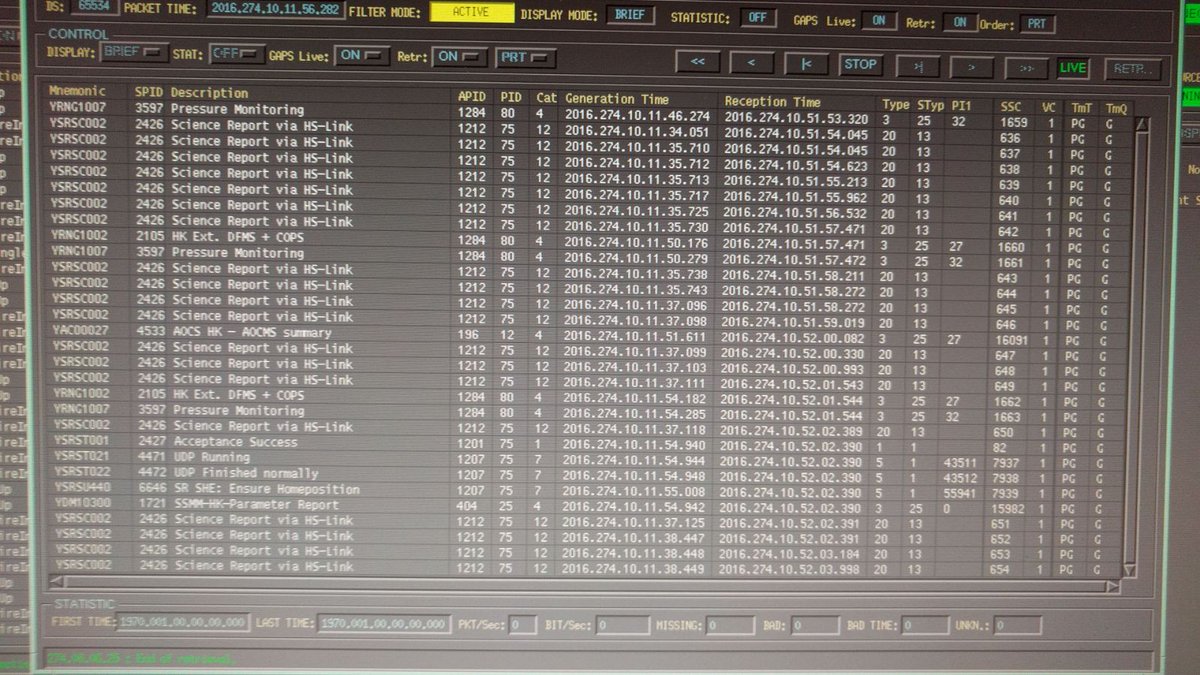
https://twitter.com/esaoperations
De landingsplaats rechts van de afbeelding (is nog onbewerkt):
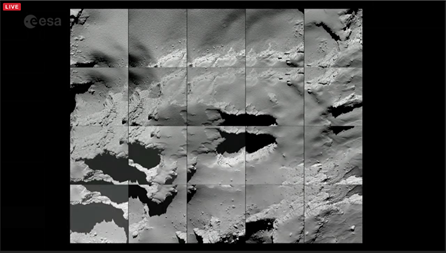
De landingsplaats in close-up
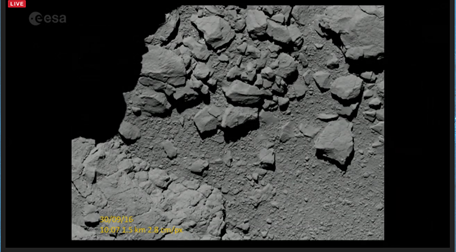
Confirmation of final @ESA_Rosetta slews as it turns to face the landing site #CometLanding
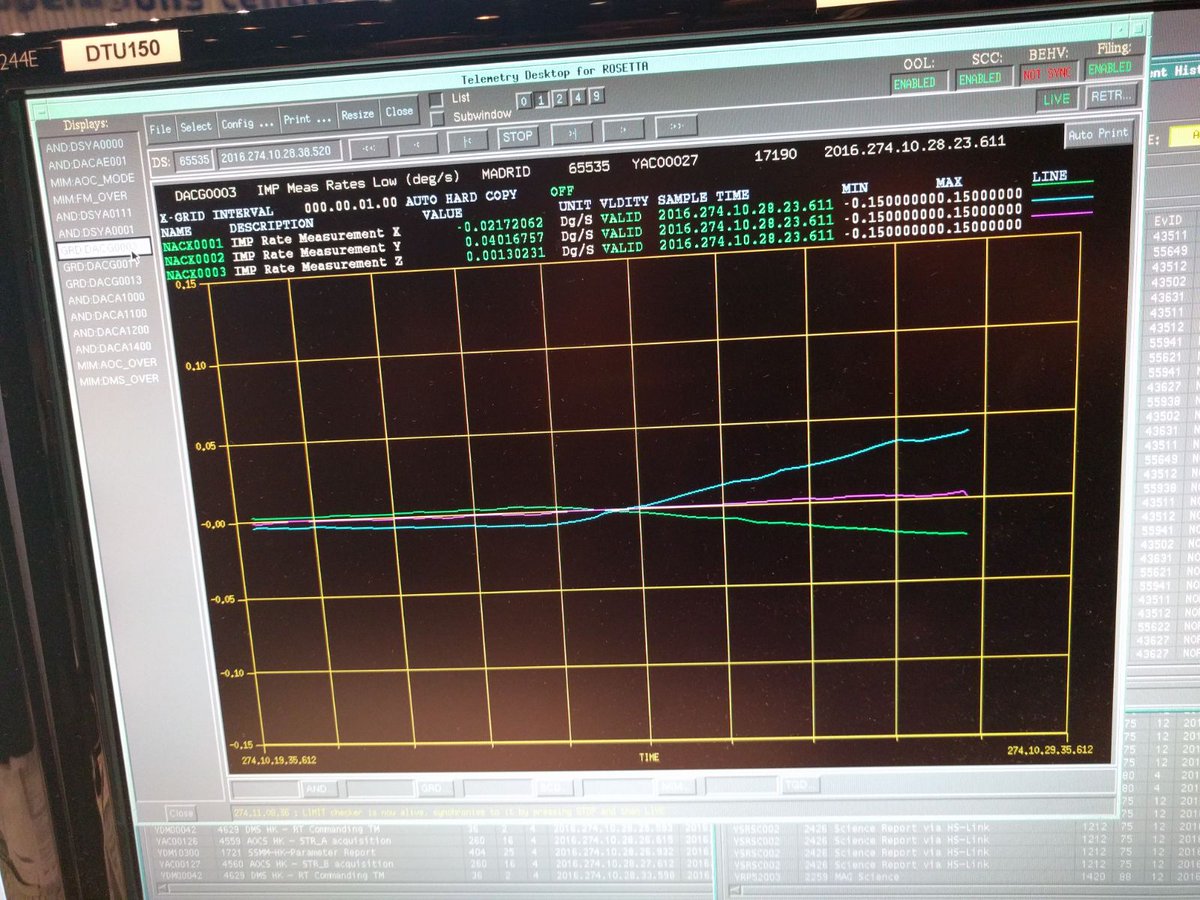
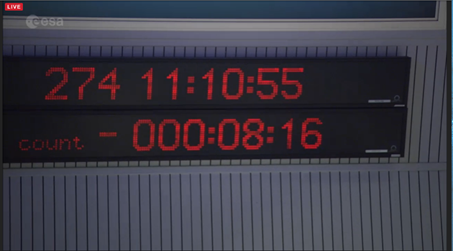
de landingsplek
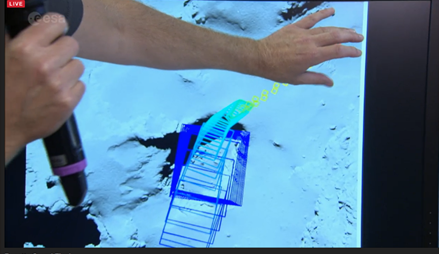
Het signaal, als deze stopt, is Rosetta geland en beïndigd de missie
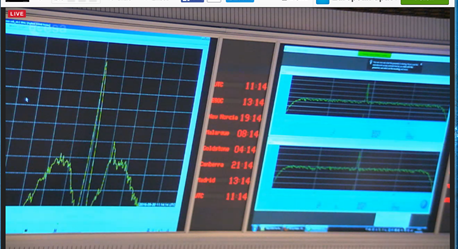
En daar is het eindsignaal!
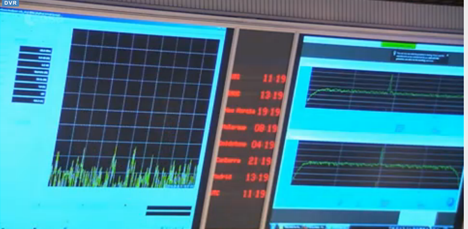
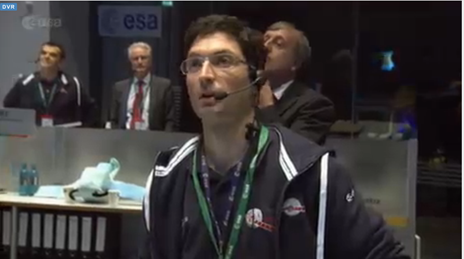
Hierbij is de Rosetta-missie definitief ten einde.
Tot slot: de allerlaatste foto die Rosetta heeft gemaakt:

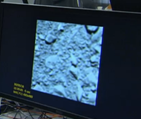
Bedankt.
De laatste foto van Rosetta

Rosetta’s final imaging sequence photo ESA
ESA’s Rosetta completed its incredible mission on 30 September, collecting unprecedented images and data right until the moment of contact with the comet's surface.
Rosetta’s signal disappeared from screens at ESA’s mission control at 11:19:37 GMT, confirming that the spacecraft had arrived on the surface of Comet 67P/Churyumov–Gerasimenko and switched off some 40 minutes earlier and 720 million kilometres from Earth.
One of the final pieces of information received from Rosetta was sent by its navigation startrackers: a report of a ‘large object’ in the field of view – the comet horizon.

Rosetta's last image photo ESA
Reconstruction of the final descent showed that the spacecraft gently struck the surface only 33 m from the target point.
The accuracy once again highlighted the excellent work of the flight dynamics specialists who supported the entire mission.
The spot, just inside an ancient pit in the Ma’at region on the comet’s ‘head’, was named Sais, after a town where the Rosetta Stone was originally located.
Numerous images were taken of the neighbouring pit, capturing incredible details of its layered walls that will be used to help decipher the comet’s geological history.
The final image was acquired about 20 m above the impact point. In addition, a number of Rosetta’s dust, gas and plasma analysis instruments collected data.
The pressure of the gas outflow from the comet was seen to rise as the surface neared. Scans revealed temperatures between about –190ºC and –110ºC down to a few centimetres below the surface. The variation was most likely due to shadows and local topography as Rosetta flew across the surface.
A last measurement of water vapour emission was made on 27 September, estimating the comet was emitting the equivalent of two tablespoons of water per second. During its most active period in August 2015, estimates were in the region of two bathtubs’ worth of water every second.

The first indications from spectral readings show there to be no significant differences in surface composition at the high resolutions obtained all the way down, and there was no obvious indication of small icy patches near the landing site.
The measurements also suggest an increase in very small dust grains – possibly around a millionth of a millimetre – close to the surface.
The last observation of the gas coma surrounding the comet was made the day before the final descent. Carbon dioxide was still being outgassed, at a greater distance from the Sun than when the comet was approaching it.
Stable solar wind conditions reigned during the final measurements of the solar wind and interplanetary magnetic field, providing ‘quiet’ background values that will be important for calibration.
Decreasing comet plasma densities were observed from about 2 km above the surface, with no obvious detection of local outgassing from the Ma’at pits.
Bron: http://www.esa.int/Our_Activities/Space_Science/Rosetta/Rosetta_s_last_words_science_descending_to_a_comet | Gewijzigd: 31 januari 2017, 16:11 uur, door Joyce.s

 Rosetta en Philae
Rosetta en Philae




